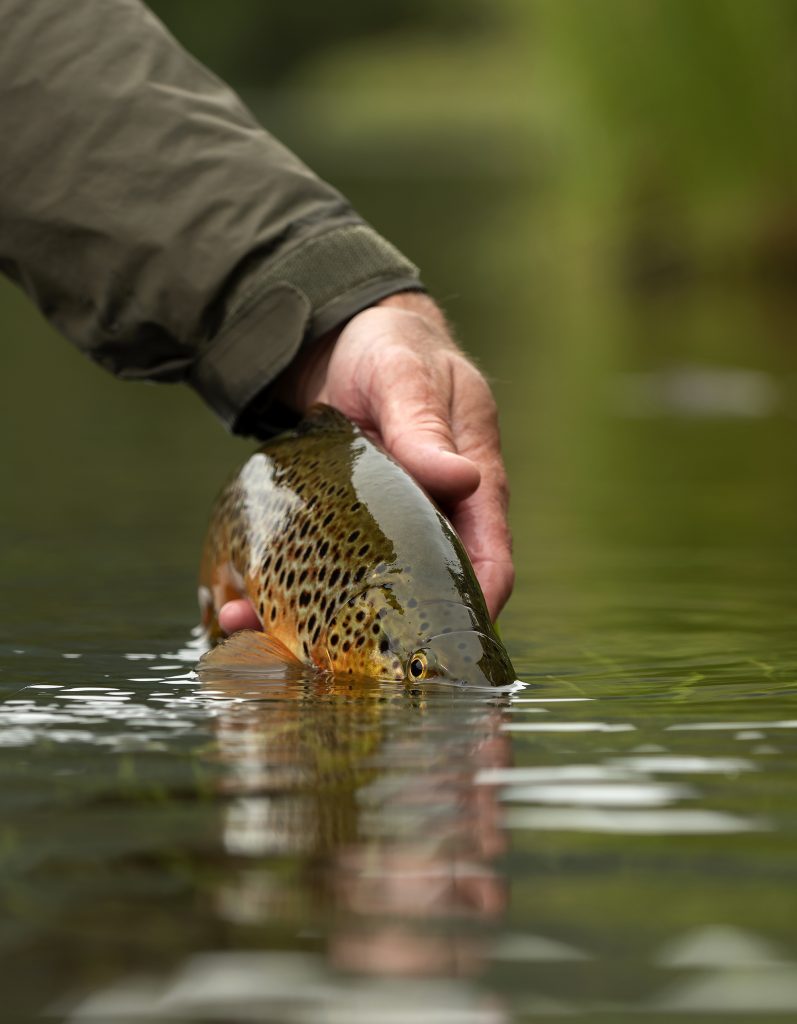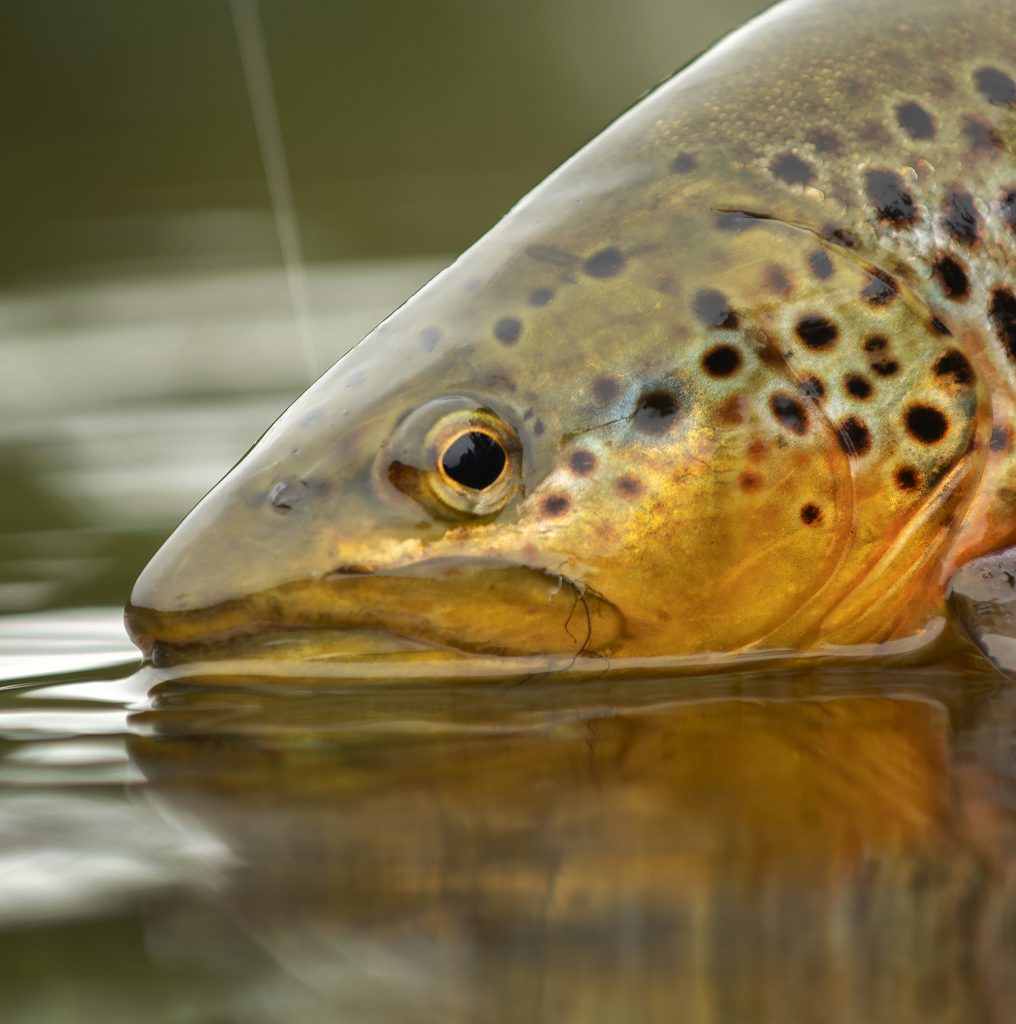
The hatch of the large mayfly, Ephemera Danica, is a high point in most trout fishers’ season. Read along to get a few tips from seasoned dry fly fisherman, John Petermann, as he shares his favourite flies – and a joker.
By Peter Lyngby
(this artickle has been published in the danish magazine “Sportsfiskeren” and the online magazine “In The Loop Magazine”)
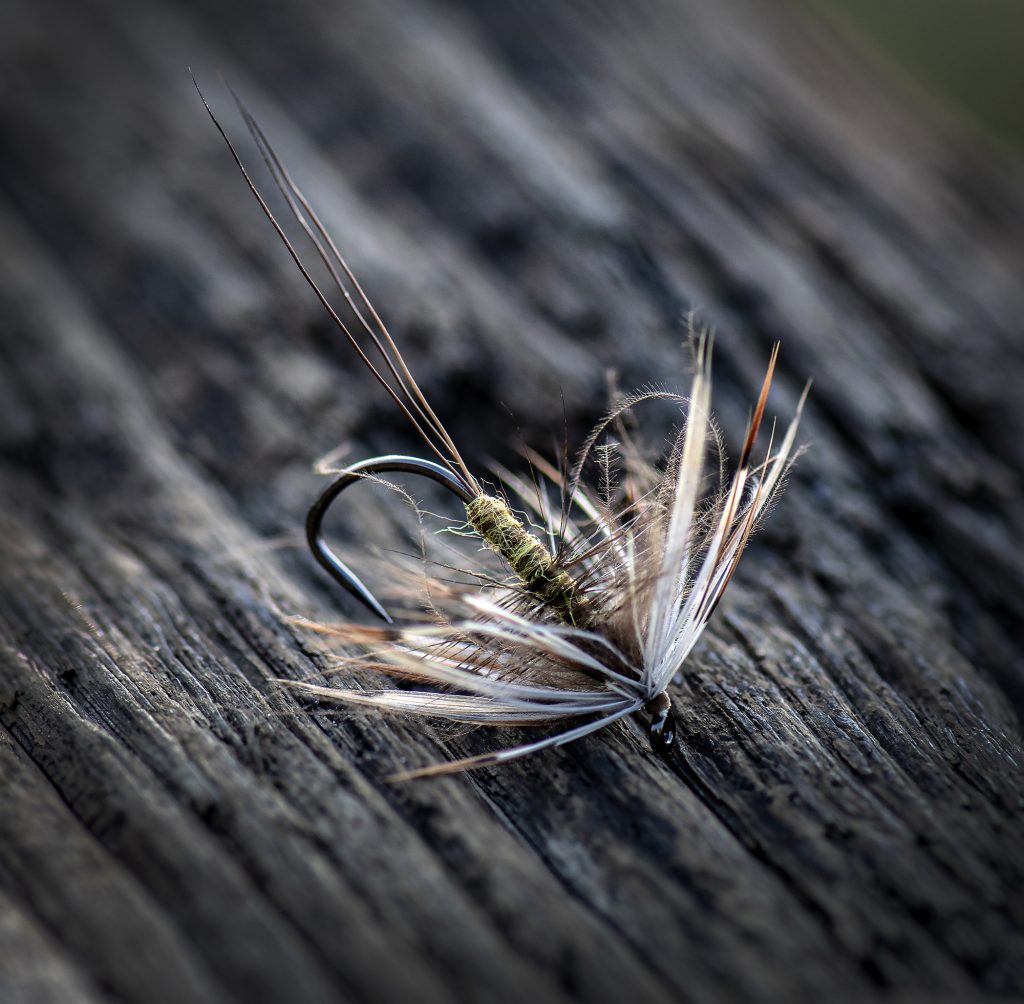
The hope of finding the first real hatches of the big mayfly lives in the heart of most fly fishers. Days alive with the large, swarming mayflies and trout feeding greedily on the surface. A hatch that’ll bring even the largest and most shy fish to the surface. Despite this you’ll still find days where the fish are tricky or the hatch is off. Then what to do? Which conditions should you look for and how do you react when the fish are feeding on other insects?
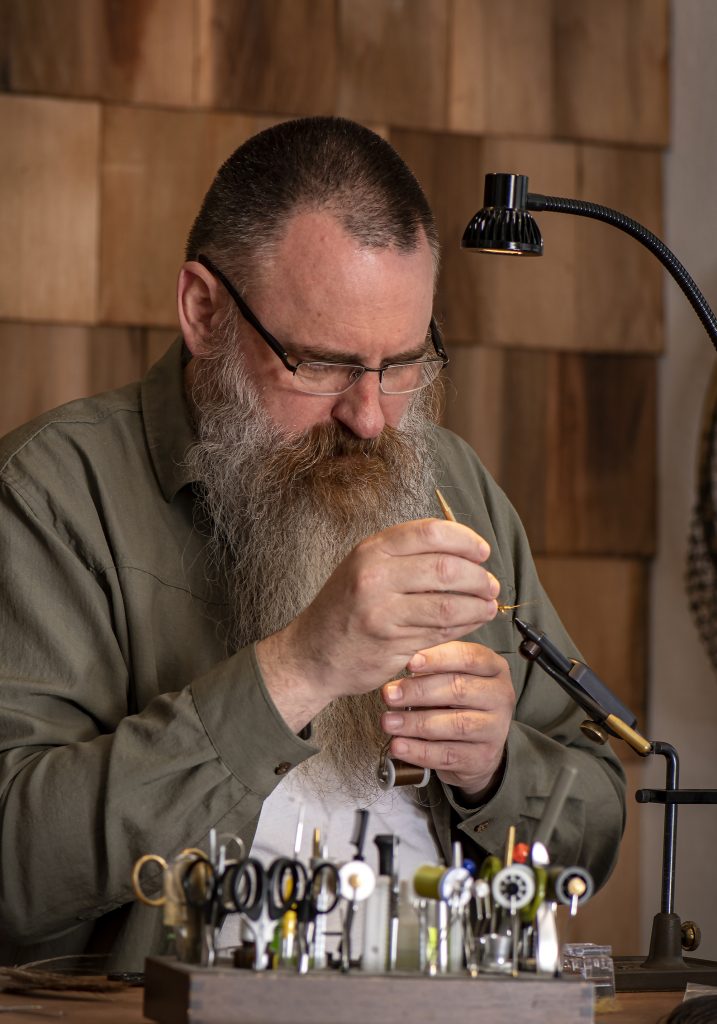
John Petermann has fished the mayfly hatches in Denmark for over three decades and has agreed to share his experiences. It doesn’t take many minutes of conversation, before John opens his fountain of entomological knowledge and talks passionately about the insects and their life cycle. John is an equally enthusiastic fly tier and is very keen on the different techniques available to the fly tier. We’ve asked John to stick to the basics and the stable, reliable flies.
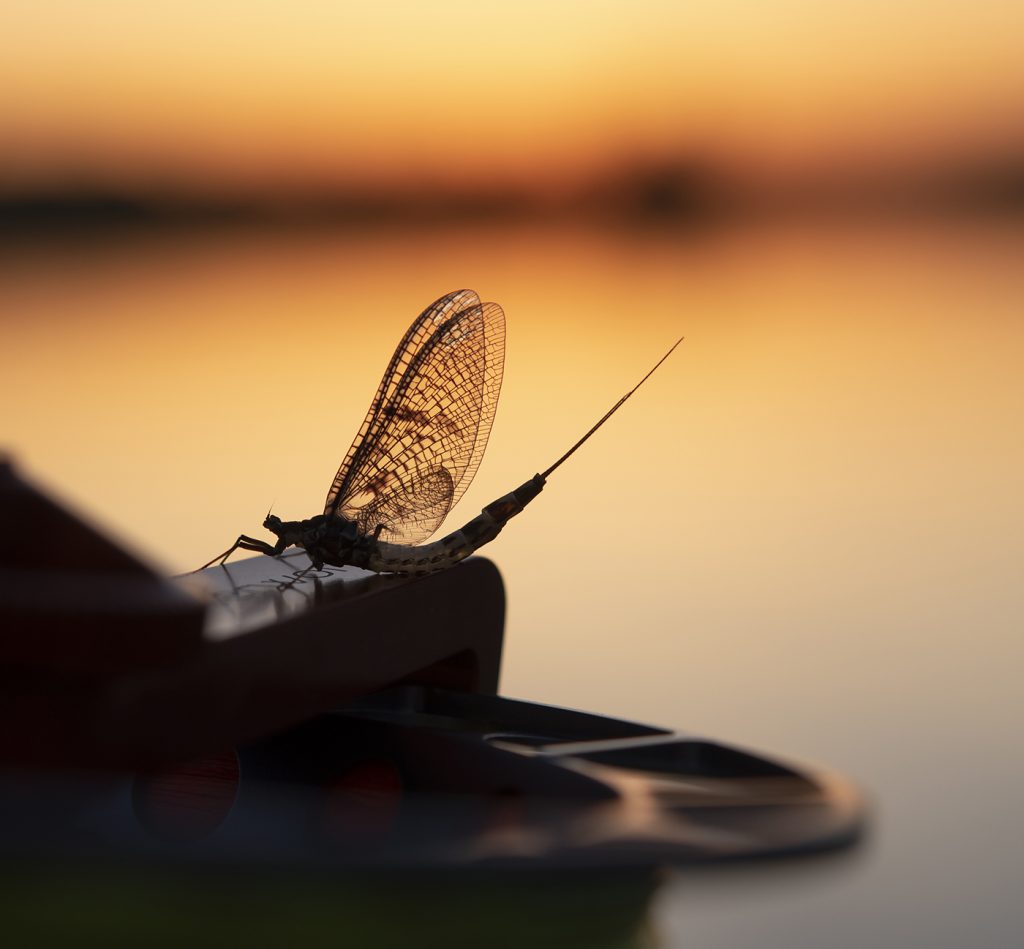
Season and hatches
Getting on the river on the right day to find the hatches is obviously imperative and John happily shares which conditions to look for.
-Most of my mayfly fishing is on the Kongeå and Gudenå in Denmark. These two rivers have the largest population of mayfly in Denmark, and you can get day tickets for both of them as well. The hatches usually begin in the middle of May and carry on until the middle of June. The first real hatches in May provide the best fishing, even though the largest hatches occur in the beginning of June. The fish seem less shy during the early hatches and feed more freely. They simply seem to get enough after a few weeks and can get tricky. I’d never settle for one trip, but if I had to choose, I’d plan for the last week of May, but it’s really not that hard to time a good hatch. Check the weather forecast for a warm day and low, barometric pressure and the insects will be there. The days where thunder seems to roll in, the sky turns purple, the wind drops and you can almost feel the electricity in the air. Quiet before the storm almost. A nice, sunny day is always enjoyable, but the insects are not as active and the fish are usually more shy, says John.
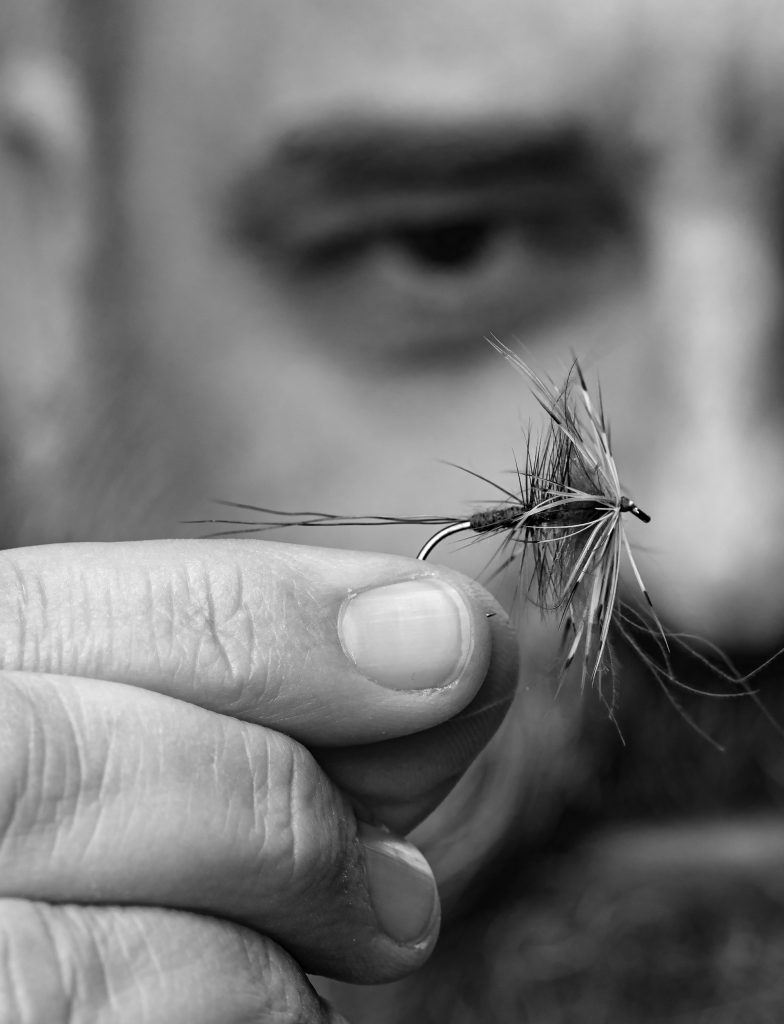
Modified French Partridge
The largest specimens of E. Danica has a wingspan of almost 5cm, so it takes a substantial dry fly to pose a believable imitation. But simple is enough most of the time, John points out.
-There are plenty of beautiful and precise imitations of the large mayfly and many of them are made with extended bodies. I recommend my Modified French Partridge, which is a simpler fly, tied to imitate the smaller, slightly darker males of the insect. A smaller fly is easier to cast and it often gives a better hook hold. A large brown trout has no trouble inhaling a large insect, or its imitation. Not all trout are big and it’s my experience that smaller fish simply push the flies with extended bodies away as they rise to them. My Modified French Partridge can be fished as the dun, the adult, freshly hatched insect sitting high on the surface. If the fish are keyed in on the spinner stage, the dying insect lying flat on the water, I can simply trim the underside of the imitation. My Modified French Partridge is my allround fly and quite far from the original French Partridge. I’ve added CDC to the wing to add just a little mobility. I do vary size and colour to match both the males and female insect, John ends.
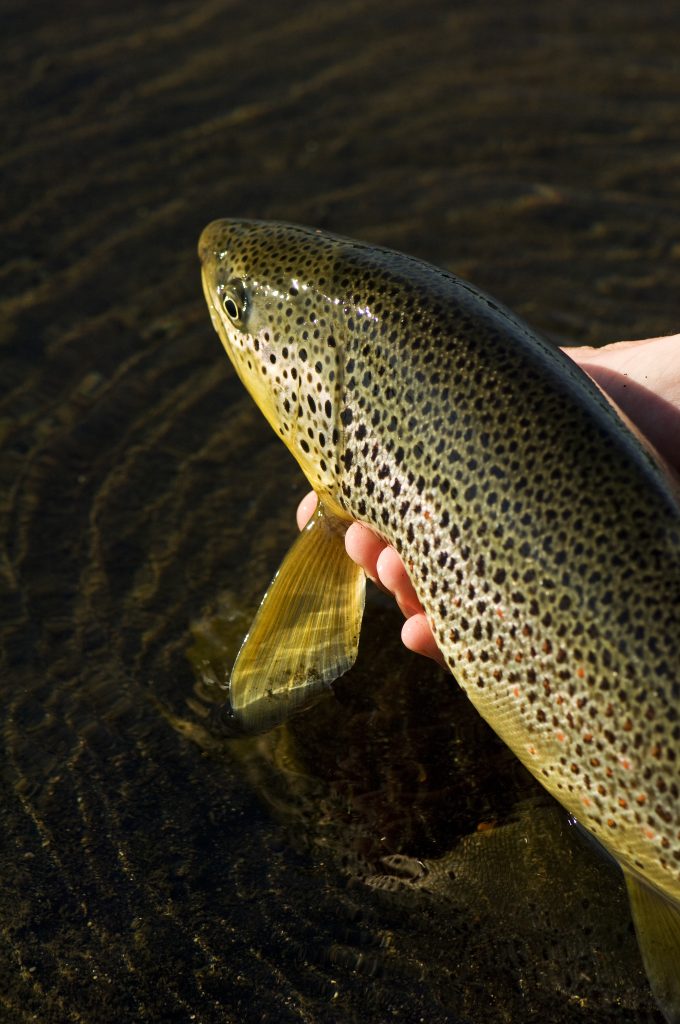
When the mayflies fail
Mid May to mid June is never an uninterrupted mayfly bonanza, so it’s important to prepare for other scenarios. There are plenty of other insects in the air and the fish know. Despite of this John dares to choose just a couple of other flies to carry.
-It’s important not to forget that the fish will sometimes key in on other hatches and different stretches of the same river can play habitat to different species. Smaller mayflies hatch during the same period, so you will experience other hatches if you pay attention. Even though the amount of insects is huge, the fish can become very selective.
My CDC Upright Spinner can imitate several species, even the yellow ones, which are much darker in their spinner stage. A brown spinner imitation covers several species of mayfly, but don’t leave out a couple of yellow dun imitations. I add a few white strands of FluoroFibre to the CDC-wing to add a little of the same reflection seen on the naturals. Just a few to keep the wing sparse – many patterns are overdressed in my view. That makes them easier for the fly fisher to see, but less like the natural, says John as he continues.
-Another safe bet is my Floating Universal Nymph. It’s a good choice when you see the trout bulging on the surface, but can’t see what they’re eating. During the evening this often means they’re eating spinners, but during the day, they’ll often be picking off hatching nymphs. I call it the Universal Nymph, because it imitates several species. It’s effective fished on the surface and just under it. I also carry a few Hawthorne imitations. This can be the decisive joker. Sometimes you’ll see trout carefully and slowly picking off insects and once in a while, they’ll make a regular splash. Then it’s often Hawthornes on the menu. Hawthorne flies are clumsy flyers and a little breeze is enough to push them down on the surface. Here they hang with their characteristic, large legs. Especially in Kongeåen I have had good days with fish rising to Hawthornes.
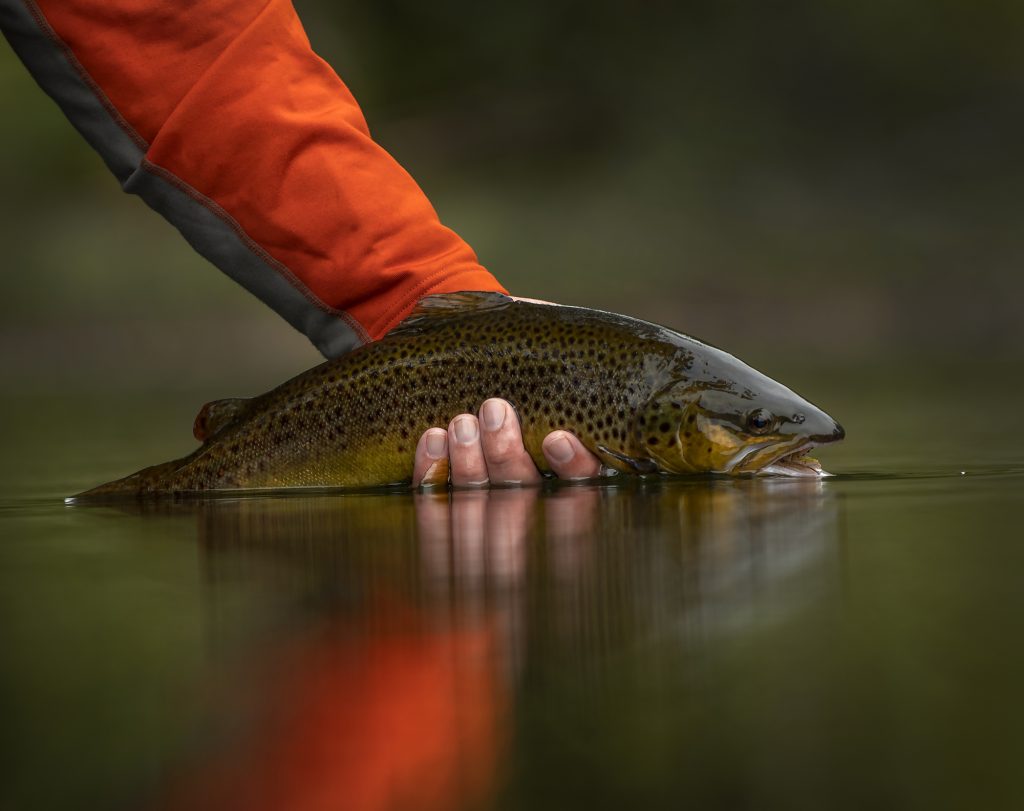
Challenging casting
If you’re not an experienced dry fly fisher, casting the big mayflies on light tackle can be a challenge. Even though it’s become popular to fish lighter and lighter tackle over recent years, John doesn’t hesitate to recommend using a 5-wt line. John also prefers a line with a medium length belly, not too short. The large flies can twist the leader if it’s too thin, so John often uses a 0,18mm tippet.
-I’m very particular with my leaders and I always tie my own. This is a longer story and if you’re a beginner, I recommend extending a 9’ leader. Choose one with a 0,23mm tippet and lengthen that with about 1m of 0,18mm flurocarbon. This will aid in presenting the fly and turning it over.
-When casting to a fish, try to get a little angle on it. Avoid the fish seeing the fly line and strive to get a drag free drift. Don’t make more than two casts if you don’t rise the fish. You may already have spooked it and if not, there’s a risc that the third cast will. If the fish continues to feed on the naturals, give it a rest. If the presentation was good, it’s a good hint that you’ve chosen the wrong fly. Time to consider changing the fly. If the fish stops eating, you should definitely stop fishing and let the it rest. Make a few mental notes on where exactly you saw it. Don’t cast to it again before you’ve seen it rise several times again.
-If you manage to time the right day, the fishing is exciting and can be very productive, so remember to take good care of the trout. The population isn’t what it used to be, so use barbless hooks. They cause less damage and makes the release easier and faster.
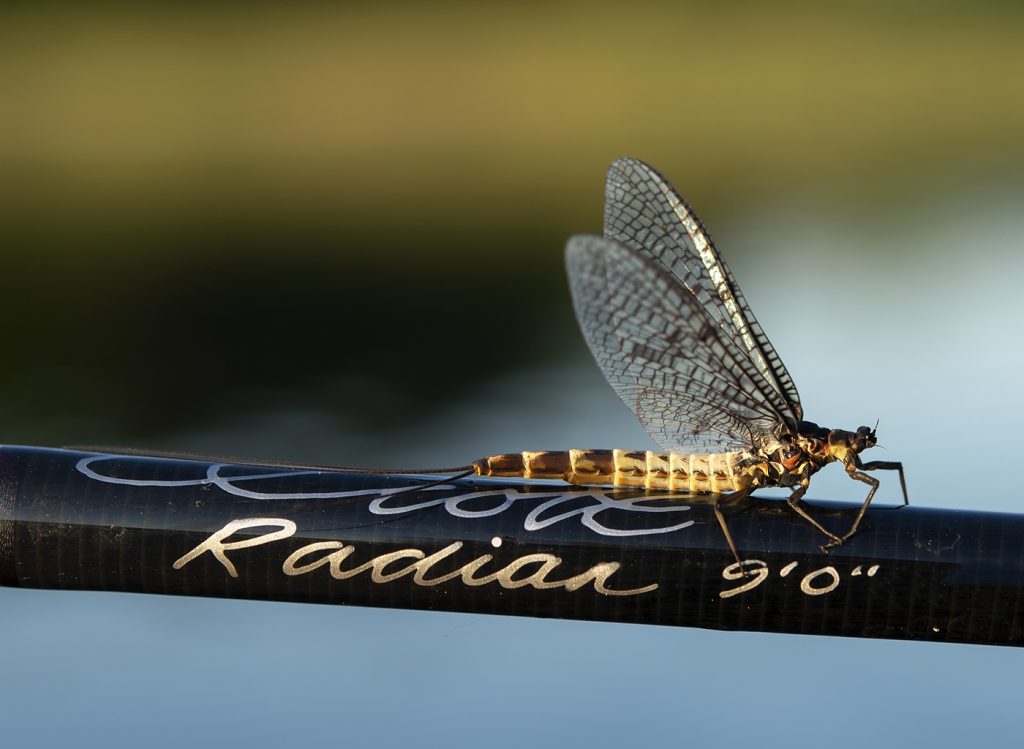
About the mayfly
Otto Friedrich Müller classified the mayfly in 1764 and named in Ephemera danica. He was a Danish naturalist and classified over 3000 species of fauna and flora in Scandinavia.
The name, mayfly, comes from England, where especially the southern chalk streams also house large populations.
The mayfly is one of the largest in the World. It can be 6-7cm from head to tail with a wingspan of 5-6cm.
John Petermanns 3 alternatives
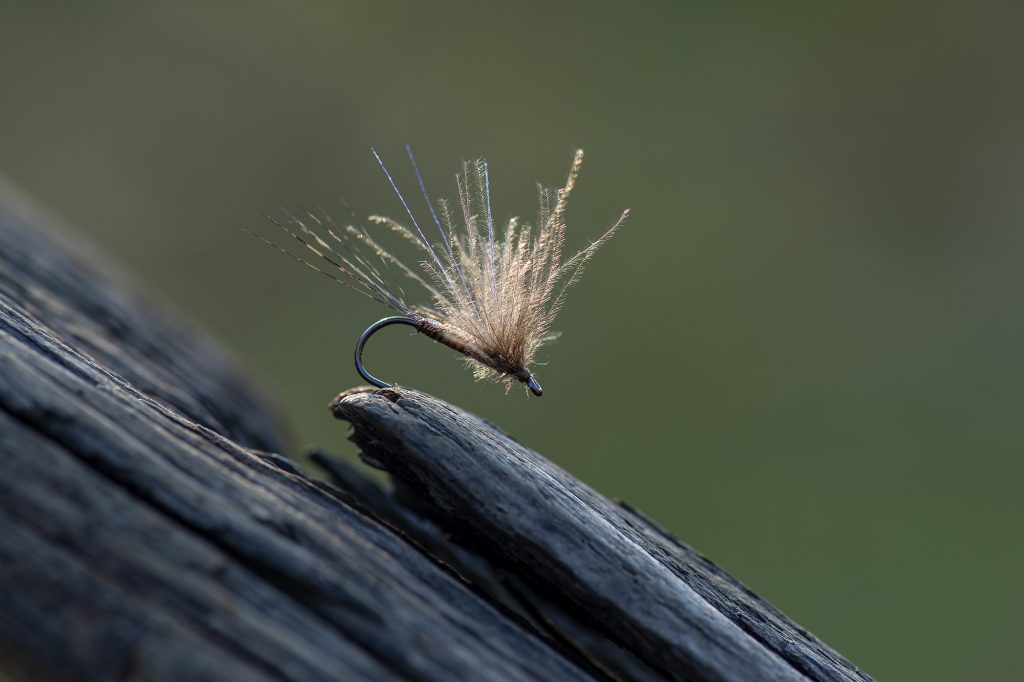
CDC Upright Spinner
Hook: Ahrex FW 501, size 10-12.
Thread: Veevus 10/0, brown.
Tail: Coq de Leon hackle fibres.
Body: Brown peacock quill, stripped.
Wing: Swiss CDC tied Compara-style with a few fibres of white FluoroFibre.
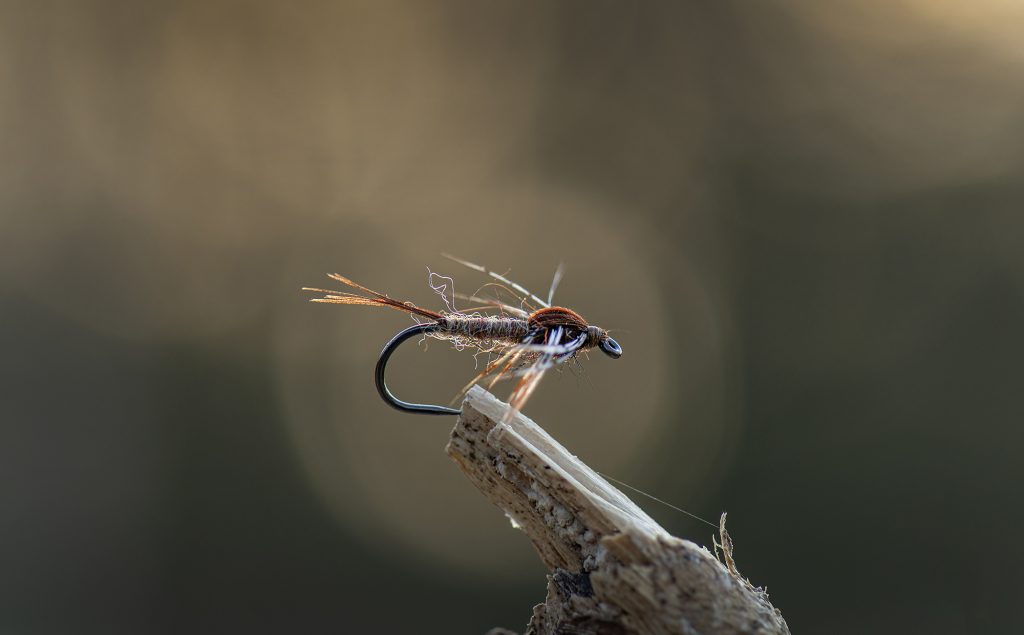
Floating Universal Nymph
Hook: Ahrex FW 501, size 10.
Thread: Veevus 10/0, brown.
Tail: Pheasant tail fibres.
Body: FlyRite dubbing, medium brown.
Legs: Partridge neck feather.
Wing case: Pheasant tail fibres.
Thorax: Hare’s ear or squirrel dubbing.
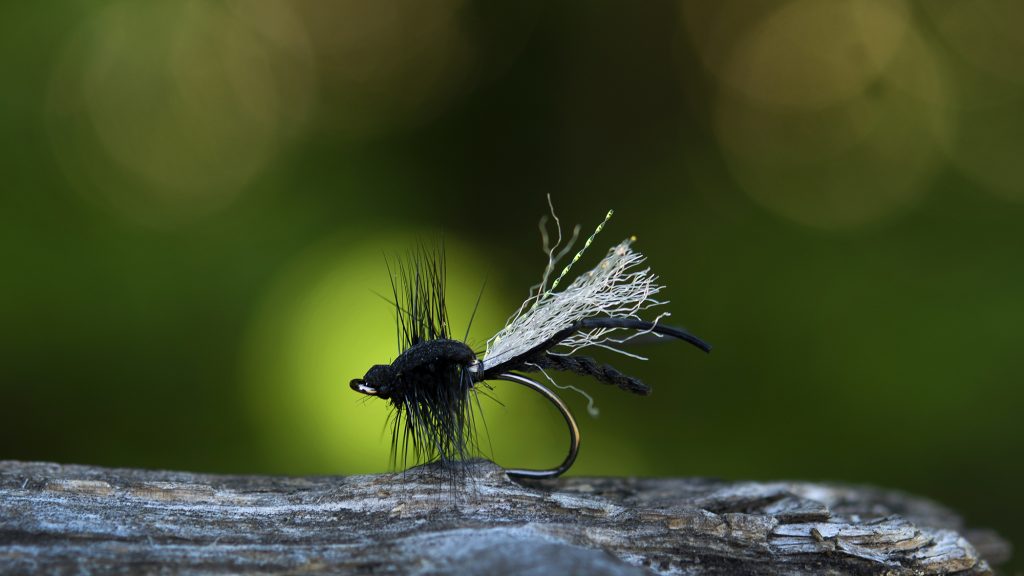
Hawthorne fly
Hook: Ahrex 521, size 10.
Thread: Veevus 10/0, black.
Legs: Black SpanFlex rubber, small.
Abdomen: Twisted black PolyYarn.
Wing case: Black foam.
Wing: White ParaPost and pearl Crystal Flash.
Hackle: Black cock hackle.
Thorax: Black SLF Spikey Squirrel dubbing.
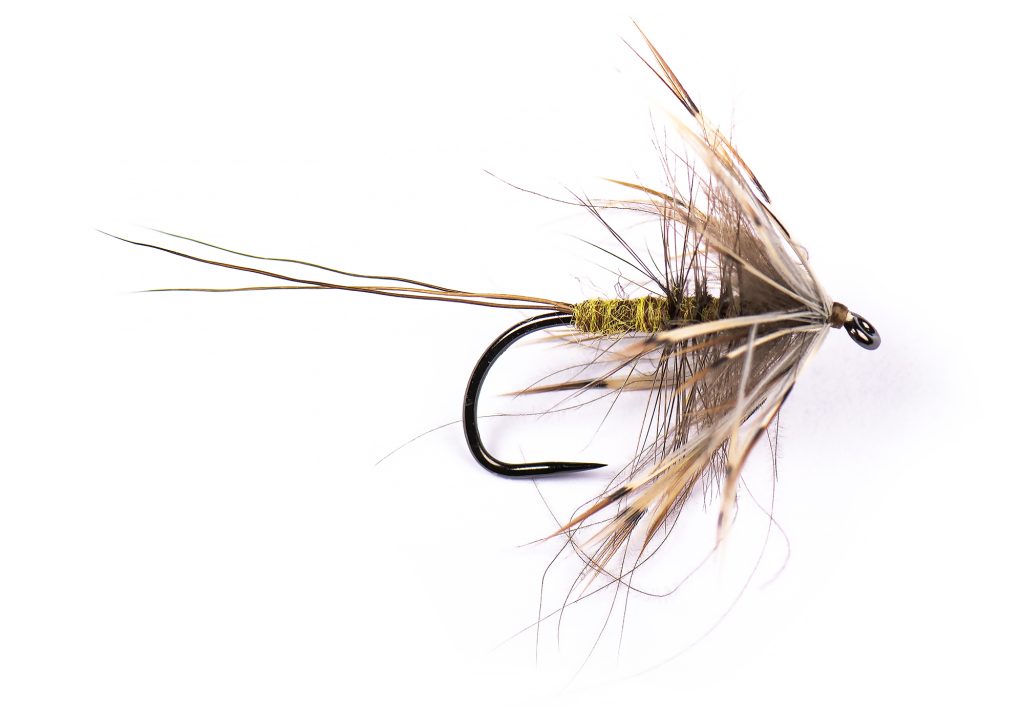
Modified French Partridge
Hook: Ahrex 571, size 4-8, primarily 6.
Thread: Veevus 10/0, brown.
Tail: Three fibres from moose mane, natural brown.
Body: FlyRite no. 34, Brown Drake.
Palmer hackle: Dark Dun cock hackle.
Front hackle 1: Swiss CDC Ultra Select XL, Dark Grey Khaki.
Front hackle 2: French partridge, natural.
Step by step
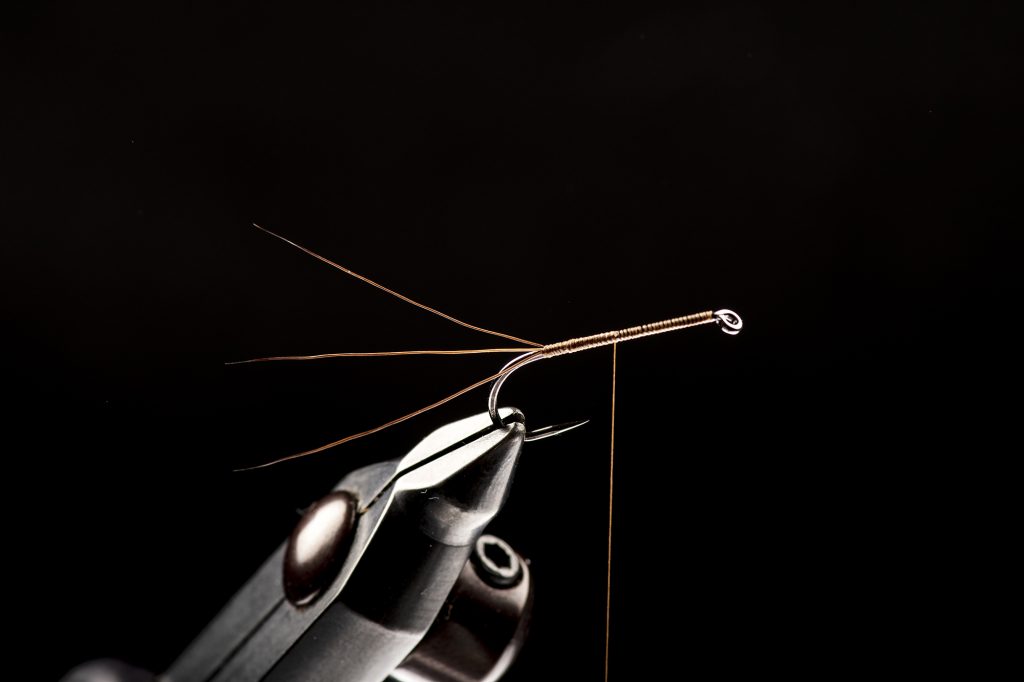
Tie in three moose mane fibres. Tie them in so they fan out evenly.
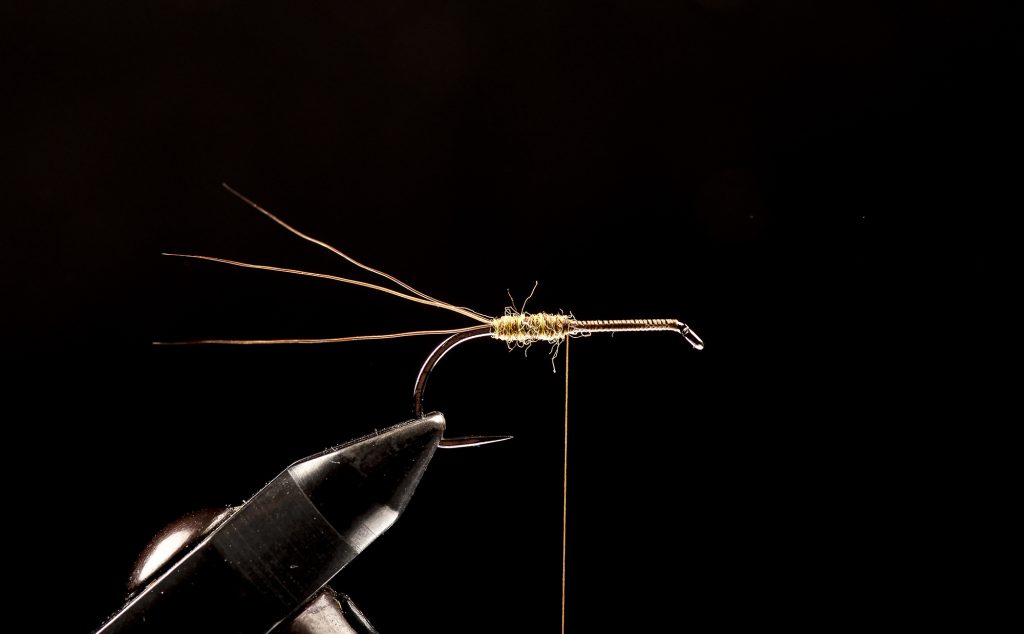
Dub the rear third of the body.
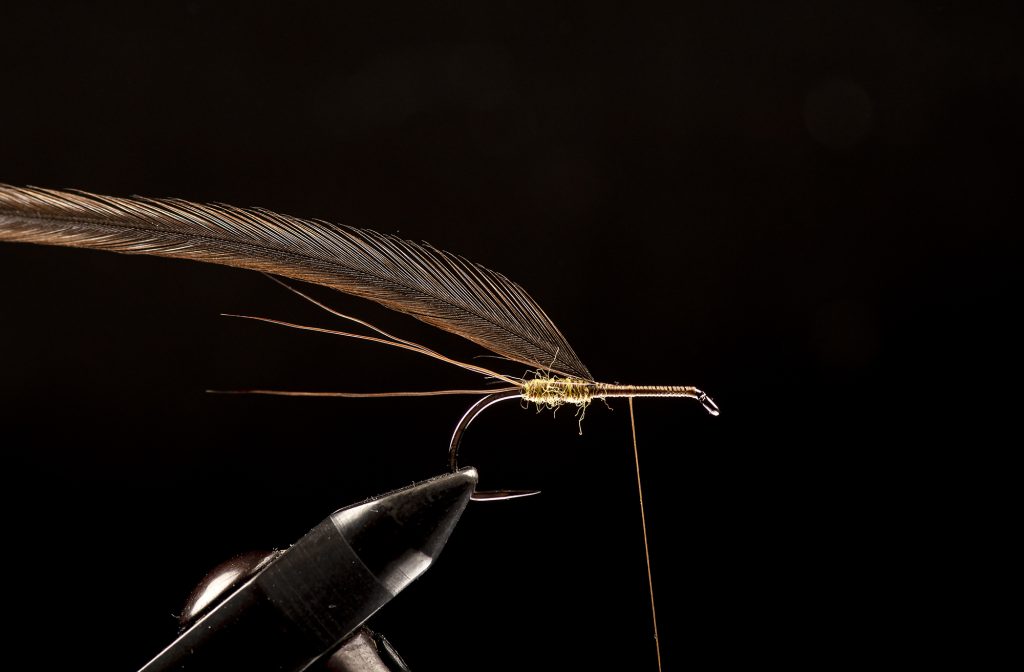
Tie in the cock hackle in front of the dubbing.
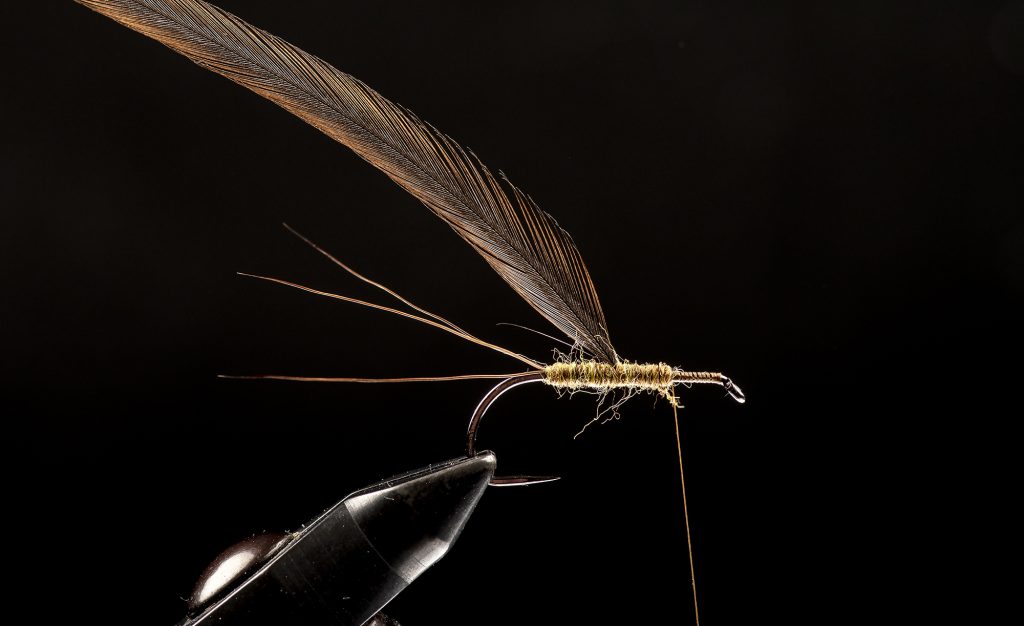
Apply more dubbing and dub the middle third of the hook shank.
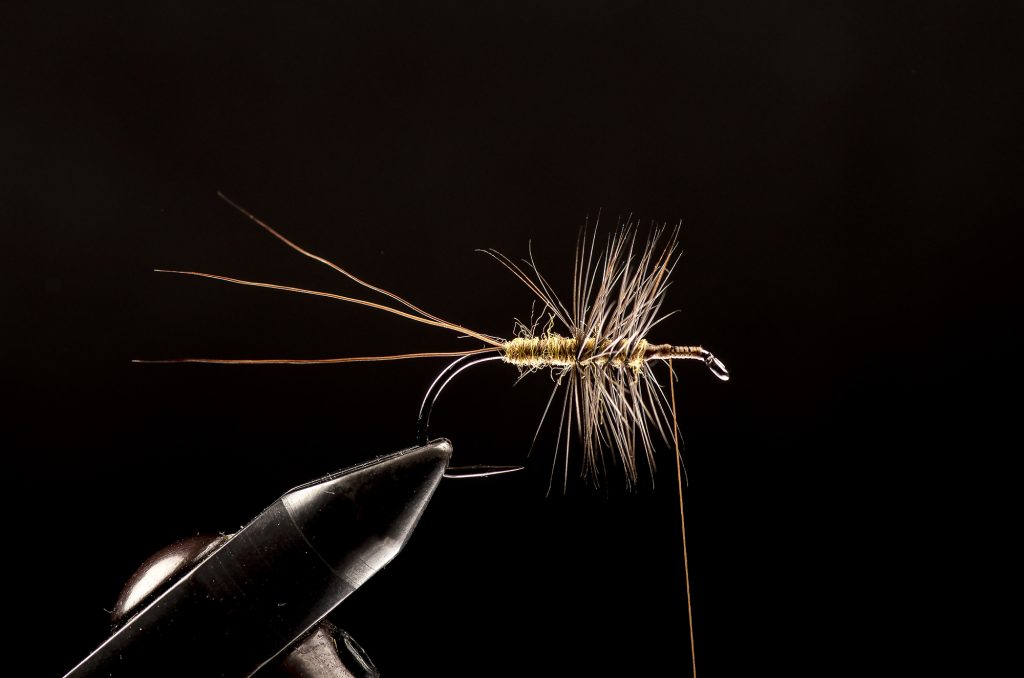
Wind the hackle forwards, making sure fibres tilt forwards. 4-5 turns is suitable.
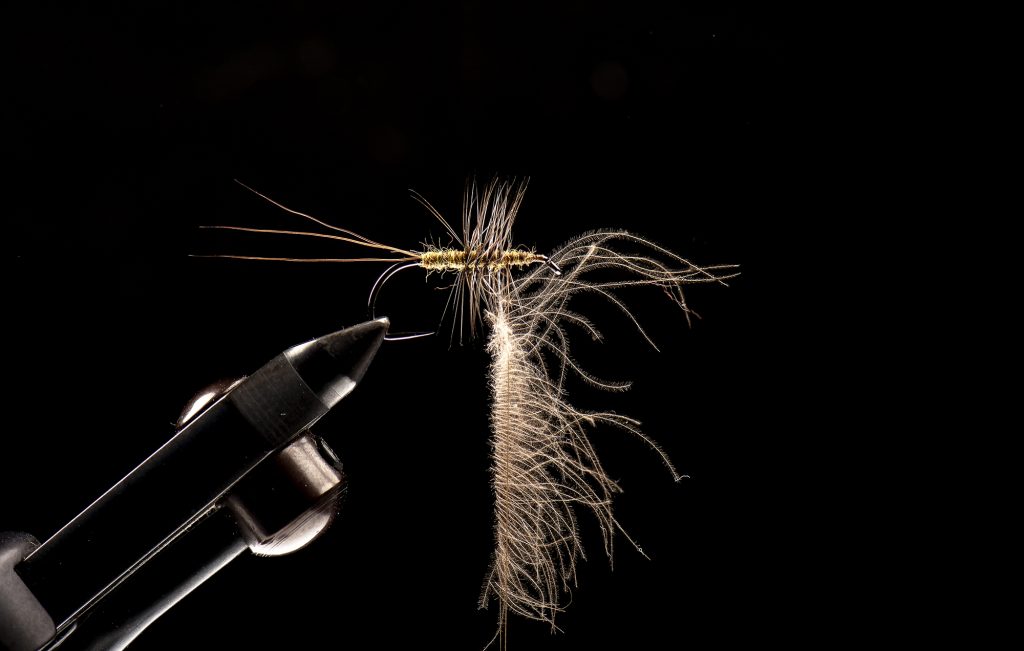
Form a dubbing loop and dub the forward third of the body and leave som space behind the hook eye. Place the fibres from the CDC feather in a clamp and transfer them to the dubbing loop.
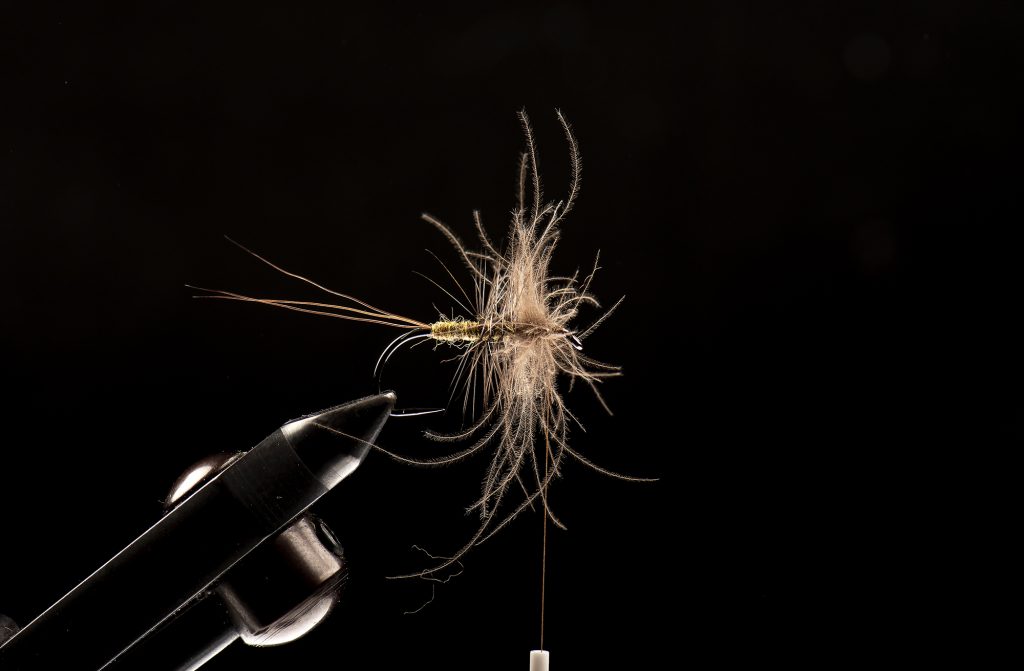
Spin the loop and turn the CDC over the dubbed body.
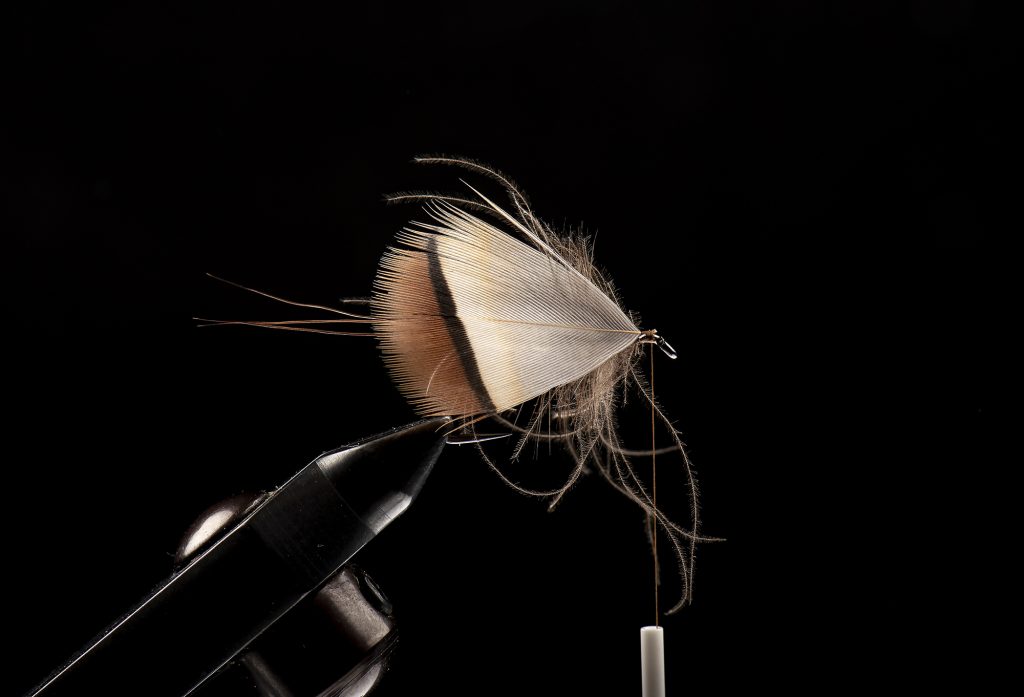
Tie in the French Partridge hackle in front of the CDC.
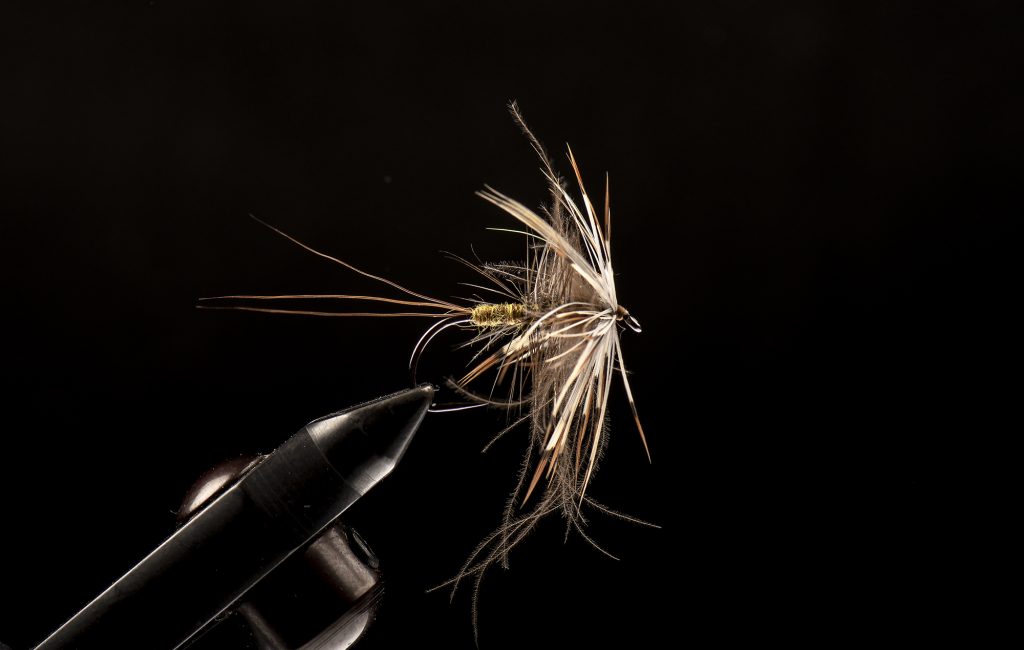
Turn the hackle 2-3 times, fish with a a knot and a dab of varnis
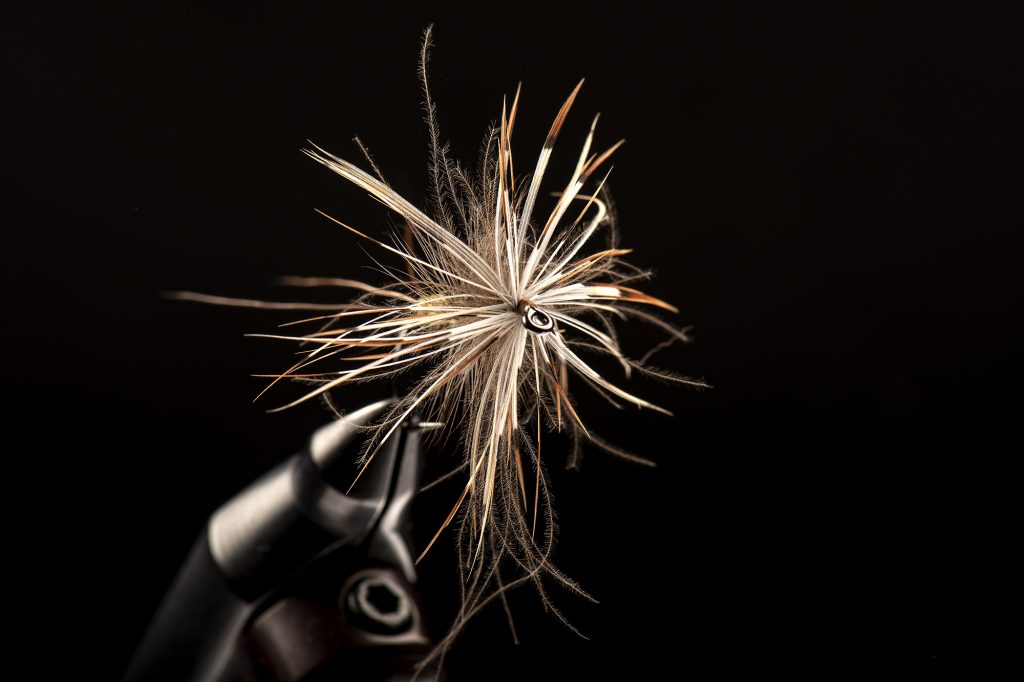
Here you can watch John Petermann tie the Modified French Partridge.
